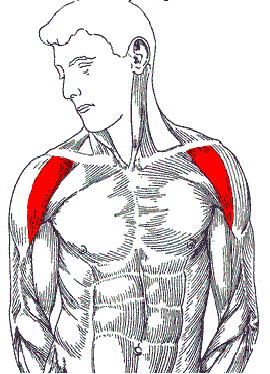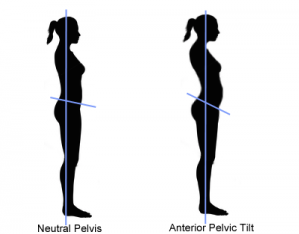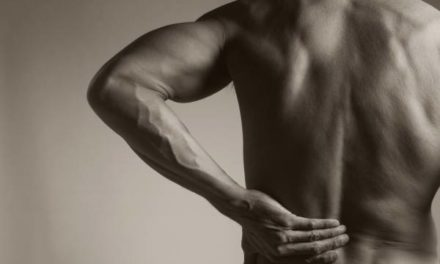Good morning everyone, and once again, happy Thursday.
So we’ve got our first two part newsletter.
In this week’s segment, I’m going to quickly talk about how sitting at our computers is changing our posture, how these postural changes cause discomfort and pain, and how these postural changes negatively impact athletic performance and lead to injury.
Next week I’ll go into detail on how to help mitigate these postural changes.
How does sitting at a computer change our posture?
When you sit down to work at a computer for an extended period of time you force a number of large muscles and muscle groups to contract (shorten) and tighten for far longer than they were designed for. The major muscles you impact are your…
1. Upper trapezius muscles.

2. Your levator scapulae

3. Your anterior (front) deltoid (shoulder) muscles.

4. Your pectoral (chest) muscles.

5. Your hip flexor muscles.

When these muscles are forced into a contracted position for hours at a time, day after day their default relaxed position begins to change and becomes shorter and tighter.
What does this new posture look like?
This new computer influenced posture has two main characteristics.
The first and most noticeable feature is the shrugged and hunched neck combined with the inwardly rotated shoulders.

The second feature is what is called “anterior pelvic tilt,” which is fancy name for when your pelvis tilts forward and forces your butt to stick up and backward and your stomach to protrude out.

How Do These Changes Cause Chronic Discomfort?
Overly tight muscles cause chronic discomfort and pain in two primary ways.
1. Overly tight muscles pull on the structures they attach too which then causes increased pressure and stress in the surrounding joints. For instance when your upper trapezius and levator scapulae are tight they increase pressure and stress throughout your cervical (neck) spine.
2. Overly tight muscles contain bundles of especially tight muscle fibers called trigger points. Trigger points are extremely sensitive to touch and are painful when pressed. Trigger points also cause referred pain, which is pain that radiates away from the trigger point and into other parts of the muscle or surrounding muscles.
Impact on athletic performance and injury risk.
Overly tight muscles negatively impact our athletic performance and lead to injury in two primary ways.
First, overly tight muscles negatively alter the way movement occurs at the joints they surround.
For example, when your upper back, neck, front of your shoulders, and your chest are all overly tight it changes the way your upper arm bone moves within your shoulder socket. This altered movement pattern will put pressure on your rotator cuff tendon and shoulder capsule in time may lead to rotator cuff tendonitis and shoulder pain.
Second, overly tight muscles can keep other muscles from functioning properly during movements.
For instance, when your hip flexors are overly tight they will impede your glute (butt) muscles from to working to their fullest potential. This in turn impedes their development, which is a big deal if you’re trying to sculpt your butt, and forces extra stress into your hip joint, which is a big deal if you care about your long term joint health.
Okay, that’s it for today. I’ll see you all back here next week for our lesson on how to fix these issues.
Until next time and to our health.
Zach





